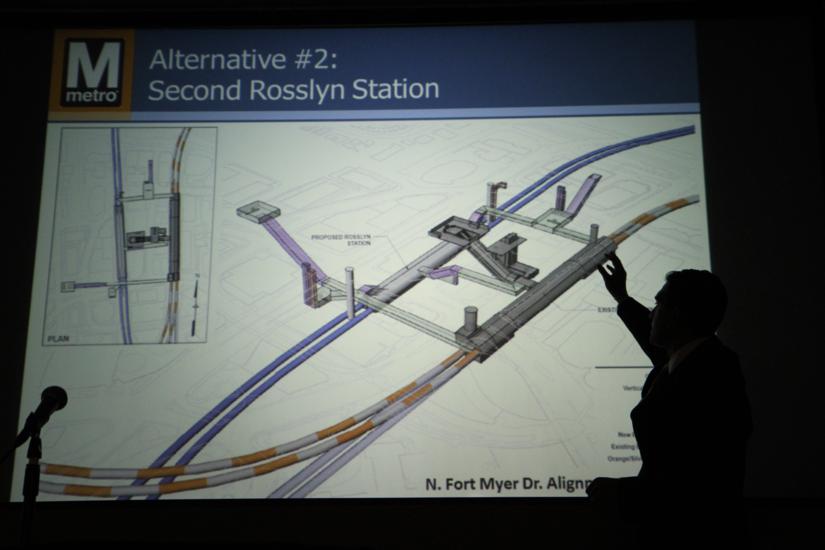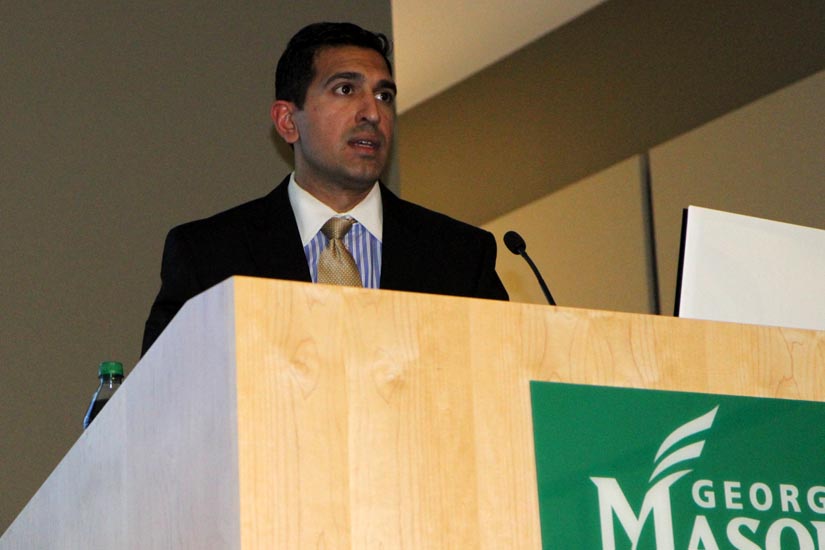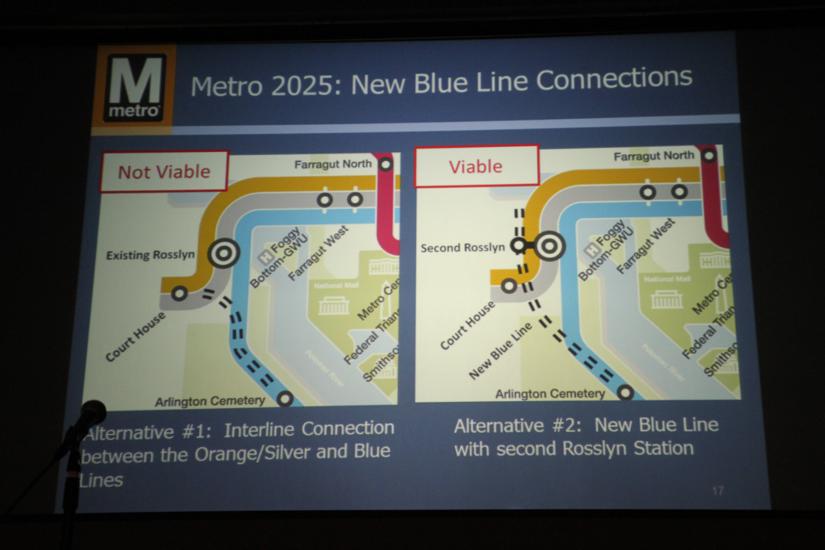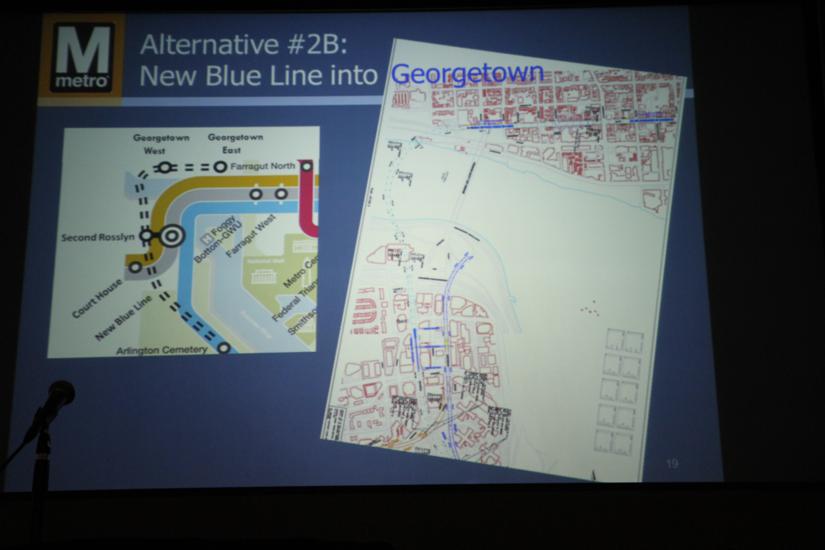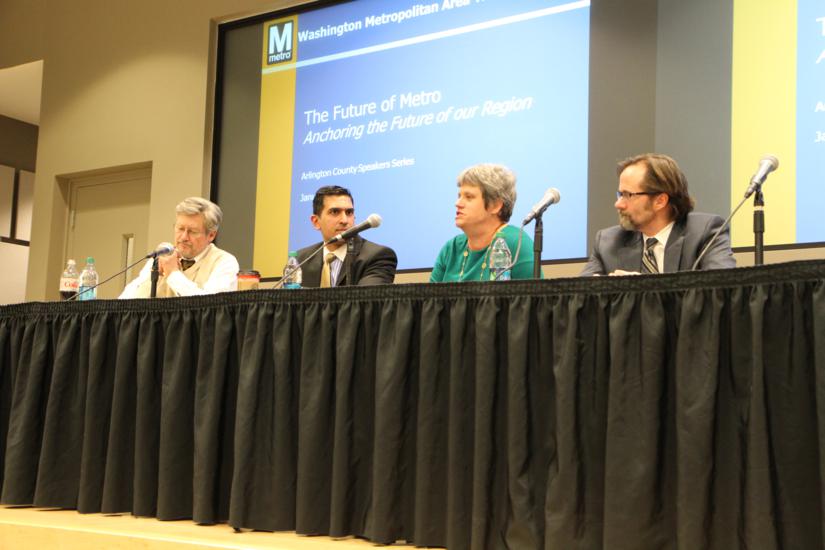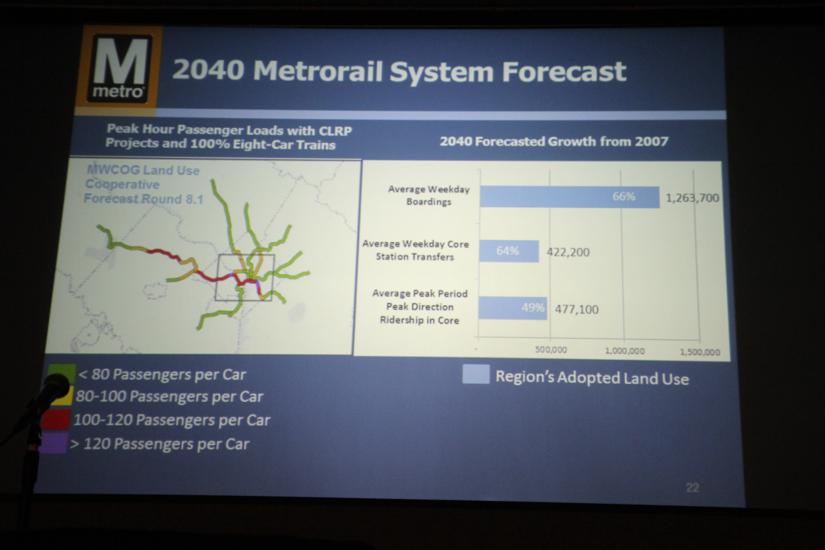Arlington will play a pivotal role in the regional economy with the coming of the Silver Line, suggests Metro planning director Shyam Kannan.
Speaking at GMU’s Va. Square campus last week, Kannan said that the Silver Line and development around Tysons Corner will make the Rosslyn-Ballston corridor the economic “fulcrum” of the D.C. area. Development pressure — particularly demand for new apartments and condos — “only becomes more pronounced” with the Silver Line, he said, thanks to our central location between the “downtowns” of the District and Tysons Corner.
That should come as a welcome bit of prognostication for Arlington County, which has been fretting about economic competition with a newly Metro-accessible Tysons Corner.
The Silver Line, however, will hasten the necessity to build a second Potomac River crossing between Rosslyn and the District. Already, service adjustments are putting a squeeze on the Blue Line through Rosslyn, reducing train frequency and increasing crowding. Metro envisions building a second Rosslyn Metro station, which will connect with a new Metro line through Georgetown via a second Potomac River tunnel. That will help alleviate the increasingly problematic “bottleneck” between Rosslyn and Foggy Bottom.
Kannan acknowledged that overcrowding and frequent equipment breakdowns are a problem, but said Metro is working to solve both.
“For those of you who have experienced the service disruptions… you’ve seen that there are impacts to our daily lives,” he said. “Metro needs to continuously invest in its resources.”
Another “long, long range plan” is to build an express line on the Orange Line which will bypass the R-B corridor, Kannan said. And South Arlington was not left out of Metro’s plans: a second entrance to the Crystal City Metro station is being proposed.
All of this will come at a cost. Kannan made sure to emphasize, for the Arlington officials in the audience, that Arlington and other local jurisdictions will either need to increase their contributions to Metro in order to fund its long-range capital plans, or help the agency obtain a dedicated funding stream — i.e. some sort of a regional tax.
“The question as a region we have to ask ourselves is, ‘are we okay going into the middle of the 21st century with a transit system that functions the same way it functioned in 1976?” he asked. “I don’t think that really spells economic strength or prosperity or livability.”
“Arlington has been a great partner,” Kannan said. “Metro is hitching its wagon to Arlington County. What bet are you willing to make now?”
The plans discussed by Kannan are a long way off, likely a decade or much longer. In the meantime, Kannan says Metro hopes to increase the capacity of its increasingly crowded rail system — which is “busting at the seams” — by switching from a combination of 6- and 8-car trains to all 8-car trains. But even that seemingly simple solution is proving to be an expensive uphill battle.
“We’re fighting hand to hand combat right now to make sure we just have the funding to keep the system going and to get to 8-car trains,” he said.
Editor’s Note: A version of this article originally appeared in ARLbiz, our weekly local business e-newsletter. Click here to subscribe.


